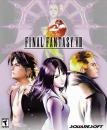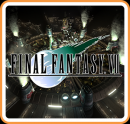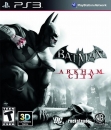
I've always made it clear that I don't play Zelda games to be challenged. While I do think that making the games easier has left the 3D entries feeling less satisfying, difficulty is usually the lowest thing on my list of things to complaint about for any Zelda game. This is usually because there are other, much more crippling problems to address, but more so than that, it's because the combat in these games are usually so satisfying that they make up for it somewhat. I want to look at the combat and difficulty of past Zelda games in depths, and hopefully come up with some hopes for the direction of both in Zelda U. These are just my ramblings.
-----
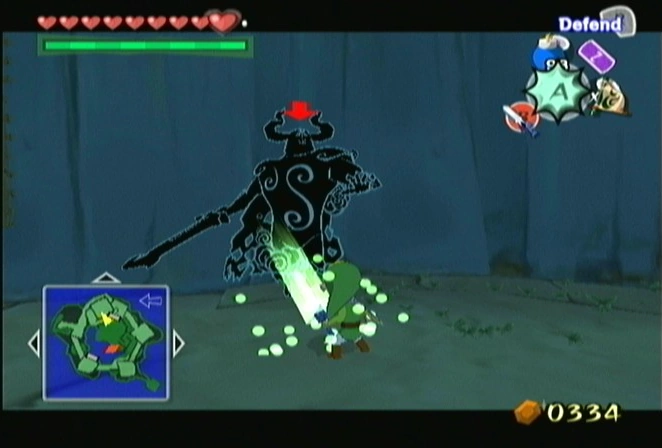
Starting point: Combat Kinesthetics
-
Comparing Wind Waker and Twilight Princess, Twilight Princess comes up at the top when it comes to depth of sword combat. On the other hand, I find that Wind Waker's sword play is by far the most satisfying in the series. This is thanks to superior sound direction and visual feed back. Each hit of the sword is accented with a sharp musical hit that compliments the battle theme in the background. When an enemy becomes open for a parry, you not only get a musical cue, but a visual cue of the sword flashing momentarily with enemy. It's all about kinesthetics. The entire combat system is expertly crafted to feel rhymic and overload your senses with music and color, and it is immensely satisfying. So much so that it pains me to imagine how much better Twilight's combat would have felt with this very same sound and visual direction.
Second point: Combat Variety
-
This isn't to say that Twilight Princess' combat wasn't also satifsying. Even without the musical hits, Twilight Princess' combat flow benefited greatly from its introduction of Hidden Skills. If you so desired, you were offered a lot of options that would allow you to keep an excellent flow going throughout a battle, switching from one Hidden Skill to another in quick chained succession as the opportunity presented itself. While that's all well end good, an issue presented itself. Because these Hidden skills were indeed hidden, it is entirely possible to go throughout the entire game without getting most of them. Because of this, all enemies are designed under the assumption that you haven't unlocked any Hidden Skills. Because enemies aren't designed to pressure the player to use these skills, many of them can still be defeated with little effort. As soon as knowing these moves becomes mandatory, enemies can be designed under the assumption that the player knows these moves, creating a much more engaging combat experience.
-
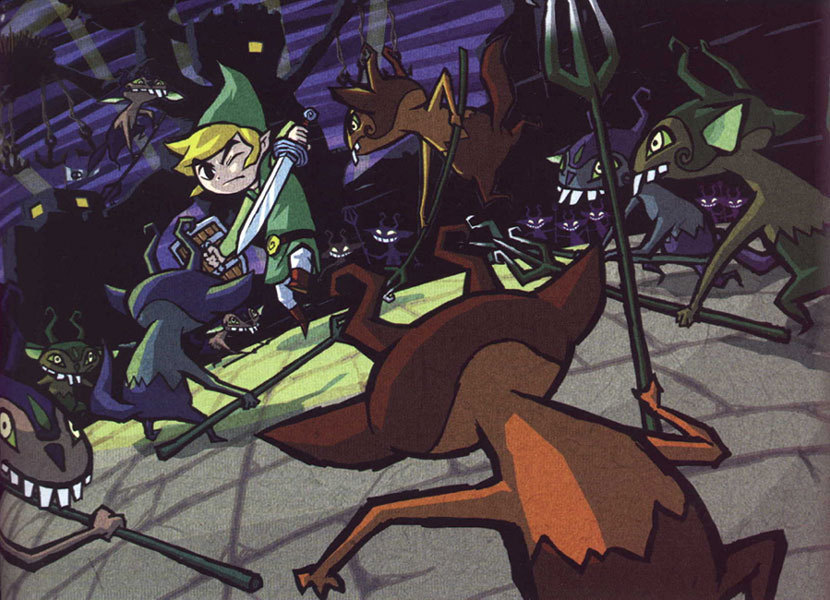
Third point: Enemy design
-
Enemy design is an oft overlooked aspect of any combat system, but in a lot of ways, it's more important. Link in Twilight Princess has a much deeper combat set than any player will ever have playing a Souls game, and yet the Souls games have an infinitely deeper combat system; at least it seems that way. A big factor in this is the intelligent way the enemies are designed in those games. Every enemy, weak or strong can be defeated with pretty much anything, and most of them can be defeated in the same way, but they are designed to teach and exploit what you think you know. They are punishing in the beginning to teach you the importance of blocking, rolling, and breaking poise. The more difficult enemies are more difficult because they are designed to exploit those very same lessons. Some will kick your sheild and follow up with a combo to punish players to rely too heavily on blocking for example. Enemies are agressive, and later ones will intelligently capitalize on moments where you heal or attack.
A large part of this is because the Souls games are designed with 1v1 combat in mind. It's always more intelligent to pick off tougher enemies one at a time then it is to try to tackle them all at once, because the combat was not designed that way, and the game is extremely punishing of players who allow themselves to get in those situations. Zelda is different. It's combat may have you locked on to one opponent at a time in the 3D, but where the combat truly shines is in keeping track of multiple different enemies with different specialties at the same time, and developing a strategy on the fly to deal with them.
-

Forth point: Enemy synergy
-
Many people know that the very first Zelda is one of the more difficult entries, but fail to realize why. As far as combat goes, none of the enemies are particularly difficult if you're fighting them one on one. Zelda NES was so difficult, in part, because there were so many enemies in a room at one time. More than that, there were many with radically different attacks that stacked on top of each other in a way that could overwhelm a player. One Darknut wasn't hard on it's own. One Wizrobe isn't hard on it's own. But a room with 3 Darknuts, 3 Wizrobes, and those statues that shoot fireballs, all in a room with blocks that restrict your traversal, can be hell.
In Wind Waker, Redeads scream to stop your movement momenterily. Poes mess up your controls until you walk into a shining light. Wizrobes shoot slow moving projectiles, and some will forever respawn enemies until you defeat them. Miniblins will always spawn just off screen so that you constantly feel as though you're being ambushed, but you don't know where. Some of the flying skulls can curse you so that you can't use your weapons temporerily. All these enemies are specifically designed to exploit you and limit the way you traverse your environment, which can make combat extremely complex when stacked on top of each other. This is why the Savage Labyrinth shines so bright. It puts you in very Zelda NES dungeon situations where you must juggle many different different enemies, all doing different things and effecting you in different ways. The complexity doesn't nessicerily come from got complex it is to kill one opponent, but in finding the most effective ways, on the fly, of prioritizing which enemies need to go first while simultaneously dealing with all of the hazards being thrown at you.
For example, there was a temple room in Wind Waker where the mini boss was just an enemy horde. There were two Darknuts, two normal Wizrobes, and one special Wizzrobe who's only job was to summon grunt enemies. While the Darknuts are clearly the most iminent and dangerous threat, the reason why this fight is more difficult than others in the game is because the two standard Wizrobes are constantly interupting your Darknut fight with projectiles, and the special wizrobe keeps summoning enemy fodder. The biggest thing you'll lose health to in this fight is chip damage, not Darknut hits. The smart thing to do then, is to take out the two normal Wizrobes first. Since they always hit and run, your best bet is to pick them off with the bow, while hitting them with your sword whenever they spawn near you. Once they're dead, you don't have to worry about avoiding their fire balls, so your movement is much less restricted. Next, you need to take out the special Wizrobe, since the infinite enemies are diverting your focus from the Darknuts, who hit the hardest and require the deepest focus. Once you pick it off, you kill off any of the residual fodder enemies. Then, you're free to take out the two Darknuts, who are far more managable now that you aren't distracted.
Fifth Point: Weapon utility
-
Another two things that made Wind Waker's combat so satisfying was the ability to pick up enemy weapons an use it against them, and the usefulness of items in combat. Almost every item had a practical use in combat, with situations that made using them the clear most superior option available. The Grappling Hook stunned and was great for stealing important collectables from enemies, the Hookshot could pull smaller enemies towards him, the boomerang stuns multiple enemies at a time and can one shot some plant based enemies, the bow was great for ranged combat and unreachable foes, etc. Almost every enemy had an exploit provided by a specific item or weapon, which kept you from exclusively sticking with your sword the entire time.
Antipenultimate point: Combat harmony
-
All this is to say that while some enemies could do with a more complex combat AI that is designed to punish what you don't know and exploit what you do, combat in Zelda truly shines in complex hordes in confined spaces. On the one hand, progress needs to be made in making the enemy AI more aggressive and have a larger move pool. On the other however, the way the enemies are layed out within dungeons should be reflect the complexity of fighting hordes in Zelda. That type of enemy placement shouldn't be a part of an optional mini dungeon. It should be part the way every dungeon is designed. Not because it's more challenging, but because it's more interesting.
Even still, Zelda also has overworld combat in far more open areas so those enemies can be designed to focus more on one combat. Enemies like Moblins, Stalfos, etc are perfect for this on top of the usual simple fodder enemies so that exploration doesn't become a constant stop and go chore.
-

Penultimate point: Difficulty inhibitors
-
As far as difficulty goes, it's just not a challenge. Even in hero mode, there's very little risk of dying if you know what you're doing. Aside from everything noted above, there is one glaring issue in Zelda games with regards to difficulty, and it's been in nearly every single Zelda game since ALttP: bottled fairies. The biggest reason people don't die in Zelda games is because bottled fairies effectively means that your life bar is nearly infinite. Majora's Mask 3D has SEVEN bottles in it. You can effectively have SEVEN times as many hearts by the end of the game without actively doing anything. You just revive over and over again. At least with potions, you need to be cognicent of your life. I do 3 heart runs of Zelda games, on hard when possible, because I have absolutely no fear that I'll die anyway. In WWHD, that gave me only 9 hearts, plus one slot for grandma's soup, no heart drops, and taking twice the damage from enemies.
I don't do that for bragging rights. I'm good at games, but I'm no speed runner. I do that because without that handicap, fairies make the game Kirby levels of easy, because you aren't punished at all for taking damage. Getting hit doesn't mean anything, and it's made worse by the presence of items like the magic armor which makes you invincable, but at least that item has the draw back of taking away your rupies with each hit. If Zelda U made this one simple change and made fairies unable to be bottled, I wouldn't dare do a three heart run. With that one simple mechanic change and absolutely nothing else, it would completely change the difficulty from cake-walk, no death, easy to acceptable or even slightly challenging.
Final Point: Difficulty mode
-
On top of that, it's hard to talk about diffuculty in Zelda games without talking about Hero Mode, or Master Quest, or Second Quest. Each of these have one thing in common, they were made to make the game more difficult. While there's a bit to discuss reguarding what these have to offer for Zelda U, an important thing that they need to do to matter at all is to be available from the start. There is absolutely no good reason why anyone should have to wait to play a difficulty mode of any kind. Aonuma once stated that it usually unlockable because he wants the player to first experience the game at an "appropriate difficulty" first. Unfortunately, many people just do not feel that the Zelda games are of an appropriate difficulty, and are unlikely to play through the game again at a more appropiate difficulty after already sinking dozens of hours into the first run and being unsatisfied with that difficulty.
Hero Mode is the most simple of the difficulty changes. It usually increases enemy damage and completely eliminates heart drops. Master Quest changes the dundeons and the enemies in each dungeon, while Second Quest completely changes where things are in the world and changes the enemies in the overworld to tougher ones. As far as a difficulty mode in Zelda U, I'm hoping for a mix of all three. First, the whole thing should work off of the rules of Hero Mode. No hearts from anything but fairies and potions. On top of that, fairies can't be bottled and the mode is available from the start of the game. While the overworld layout doesn't need to be different from that of easy mode, the enemies put in the overworld should be changed up to be more difficult, switching out weaker ones for tougher ones. The dungeons should be completely reworked to have a more complex layout than the ones in easy mode, to be more like the Water Temple or the dungeons in Majora's Mask. The enemies in the dungeons should be changed and layed out in a way that works harmoneously with one another. Lastly, the AI of toughter enemies should not only be more aggressive, but be designed to more exploitative and punishing.
-

EDIT - Bonus point: Ocarina of Time and Majora's Mask
-
I focused a lot on the combat improvements of the late 3D Zelda games, but in doing so I failed to point out a particular quirk of the combat system that OoT and MM introducted that keeps the combat feeling immensely satisfying even while being easy.
Locking on to anything in 3D Zelda game brings up "filmic" black bars on the top and bottom of the screen and the camera reframes itself to keep one particular enemy and the player always visible at the same time. Because the developers can be confident that player is recieving all the information they need to defeat the enemy, they can add an intimacy and cinematography to the action that games like The Order failed to do using a similar effect, without compromising gameplay to achieve it. It makes every battle feel more epic, more intense, and more cinematic, all while objectively making the gameplay better.
-----
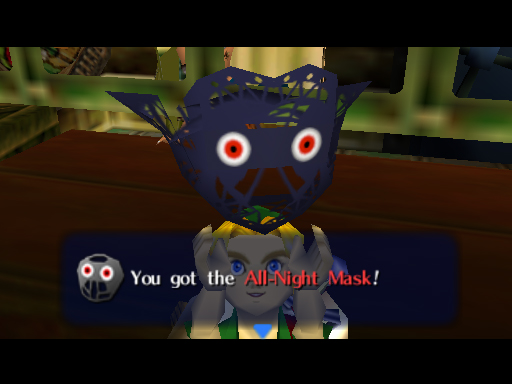
Thank you for reading!































